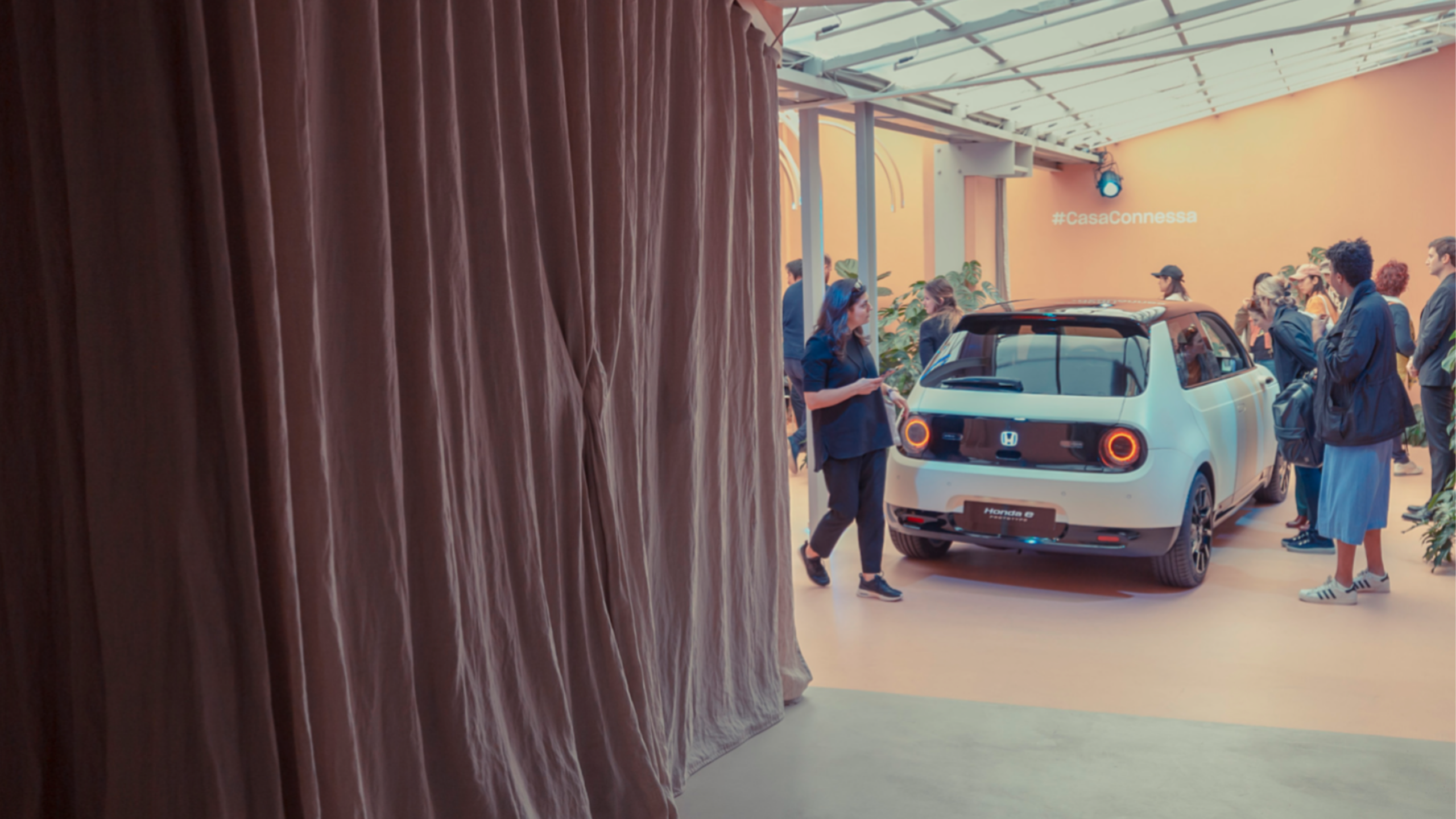MEETING the Honda
e PROTOTYPE AT Milan Design Week

By Laku Davies

The minute I saw the Honda e Prototype on YouTube, I knew I was in for a treat! I am not a car expert but I do know a good thing when I see one and the e Prototype is definitely a good thing.

Milan Design Week was founded in 1961 to showcase the skill and flair of Milan’s furniture designers. It soon caught on, and today enjoys an enviable reputation for setting design trends around the world.
Needless to say, the chance to take a peek behind the scenes of the 2019 Milan Design Week was too good an opportunity to miss.
One of the most recent developments for the design fair has seen car companies come out of their shell a little, showing the rest of the world that the stylists who dream up the exterior and interior look and feel of new cars aren’t only interested in making functional products. They’re just as interested in the form, and the way the car works within its surrounding environment.

Honda is a perfect example of that. It created an exhibit around its new electric car, the e Prototype, which is still going through the final stages of development before going on sale in early 2020.
The Honda experience - Casa Connessa Tortona was showcased at Milan Design Week in a way that really got people – me included – thinking about the way we live.

You entered the exhibit via a walkway, which used acoustic and visual tricks to recreate the hustle and bustle at the heart of a city like Milan. There was the noise of cars, the waspish buzz of scooters and what felt like countless voices all drowning out the sounds of nature.


But the idea of the installation, Honda's John Nagamine-Jones told me, was to bring a more calming environment to visitors. "We wanted people to feel calmer, more comfortable, and to hear the birdsong and see the greenery."


The suggestion, he said, was that by choosing the Honda e Prototype, drivers would experience a car that is more relaxing, friendly and offers a sense of connection with the people that use it and those around it.






The next part of the exhibit was perhaps the most striking element for visitors. An energy tree, created by Alessandro Gedda, enveloped the room, its bent birch arms capped with soothing electric-blue lights, perhaps a hint at this Honda car’s electric power.
Gedda is an Italian artist from Tuscany who began in painting and photography, before exploring furniture for both the great outdoors and pieces for indoors. His work is complemented at ground level by furniture pieces selected by Francesca Gatti, an Italian who specialises in collections of Danish furniture – check out her work at Danord.

So far, so soothing. Peering into the Honda e Prototype – we couldn't sit in it as it wasn't a production car – you could see what Honda was getting at.
The interior is just as warm and approachable as the exterior – the latter reminds me of my mum’s old Honda Civic, which she owned in 1970 and has shown me pictures of.
This left me curious; why be influenced by something from the past? I asked Ken Sahara, who led the exterior design of the e Prototype for Honda. "Generally cars are getting bigger and bigger, and more complex. So we wanted to make something that was smaller, simpler, easier to use, yet also hi-tech with all the functionality drivers want nowadays."
"We wanted to make something that was smaller, simpler, easier to use..."
In a way, says Sahara, the original Civic from the 70s was small and efficient and the perfect city car. He hopes the e Prototype will again be really popular with people after a second car, albeit one that is emissions-free.


The interior is very sleek, with wood-finish for the dashboard and a general home-like, minimal vibe. It is a five-door but the handles are cleverly hidden, fooling the eye into thinking it’s a three-door hatchback.
Inside you have nothing short of six screens. There are two for the side cameras (no wing mirrors), one for the driver’s camera, one for the speedometer screen and the final two for computerised displays for both the passenger and the driver. The way this technology seamlessly blends in to such a calm environment is my highlight of the e Prototype.
Akinori Myoui, who worked on the Honda e Prototype’s interior design, told me how the inspiration came from the connectivity between people – not just the driver and the passenger but also those on-board and those outside. So the challenge was to come up with something closer to a living room concept, rather than a traditional car interior.
Although the e Prototype is said to have been developed as a second car for families, I reckon it’s a great car for a girl like me. With a driving range of around 120 miles (200km) on a single charge, it’s more than sufficient for urban use and it doesn’t take too long to charge up again – in 30 minutes the battery can be topped up to 80% using a rapid charger.
I hope you enjoyed the Honda experience - Casa Connessa Tortona as much as I did!









